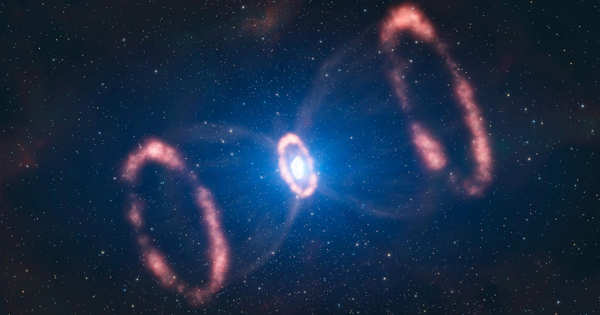Gliese 179 b is an extrasolar planet that orbits the M-type main-sequence star Gliese 179, which is located in the constellation Orion about 40 light-years away. It is an exoplanet that orbits the star GJ 179, which is approximately 40.4 light-years (12.4 pc) away from our Solar System. Its discovery was made public in 2010.
Gliese 179 is a 12th magnitude M-type main-sequence star located in the constellation Orion about 40 light-years away. This star is smaller, cooler, fainter, and has a lower mass than the Sun. It also has twice the metal content of the Sun. A gas giant planet was discovered in orbit around the star in 2009.
GJ 179 has an apparent magnitude of 12.0 and an absolute magnitude of 11.5. It is 0.4 times more massive and 0.4 times larger than our Sun. The surface temperature is 3370 degrees Fahrenheit, and the spectral type is M3.5. This planet has a minimum mass slightly less than Jupiter and orbits the star at 2.41 AU or 361 Gm with an eccentricity slightly less than Pluto. The planetary distance varies between 1.90 and 2.92 AU. On November 13, 2009, this planet was discovered using the radial velocity method from a spectrograph at Keck Observatory.

This is an M-type main-sequence star with the stellar designation M2V. Based on the star’s motion through space, it is estimated to be 4.6 billion years old. It has a projected rotational velocity of 4 km/s and is chromospherically active. This star is smaller and less massive than our Sun, but it contains more metal. At an effective temperature of 3,424, it radiates only 1.6 percent of the Sun’s luminosity from its photosphere.
The extrasolar planet GJ 179 b orbits the star GJ 179 every 2288.0 days at an orbital distance of 2.41 AU in this planetary system (360530868.4 km). A Jovian-type planet was discovered in orbit around the star in 2009, making it one of the few red dwarfs known to host a planet of this size. The radial velocity data suggested that there could be another companion. Tidal interactions with the host star are not expected to affect this planet due to its orbital distance. In 2017, a second candidate planet was discovered and confirmed 2019. This is a possible super-Earth with a minimum mass of about five times that of the Earth.
















